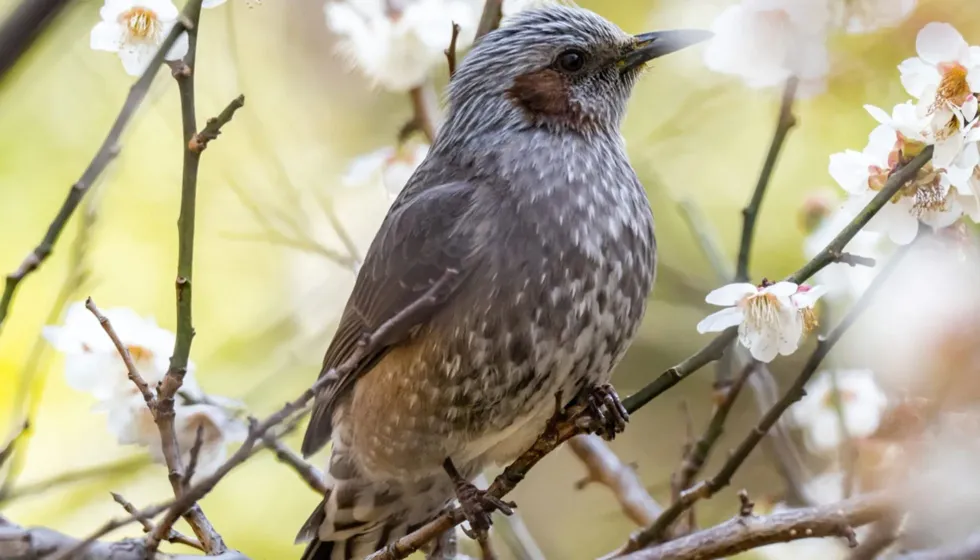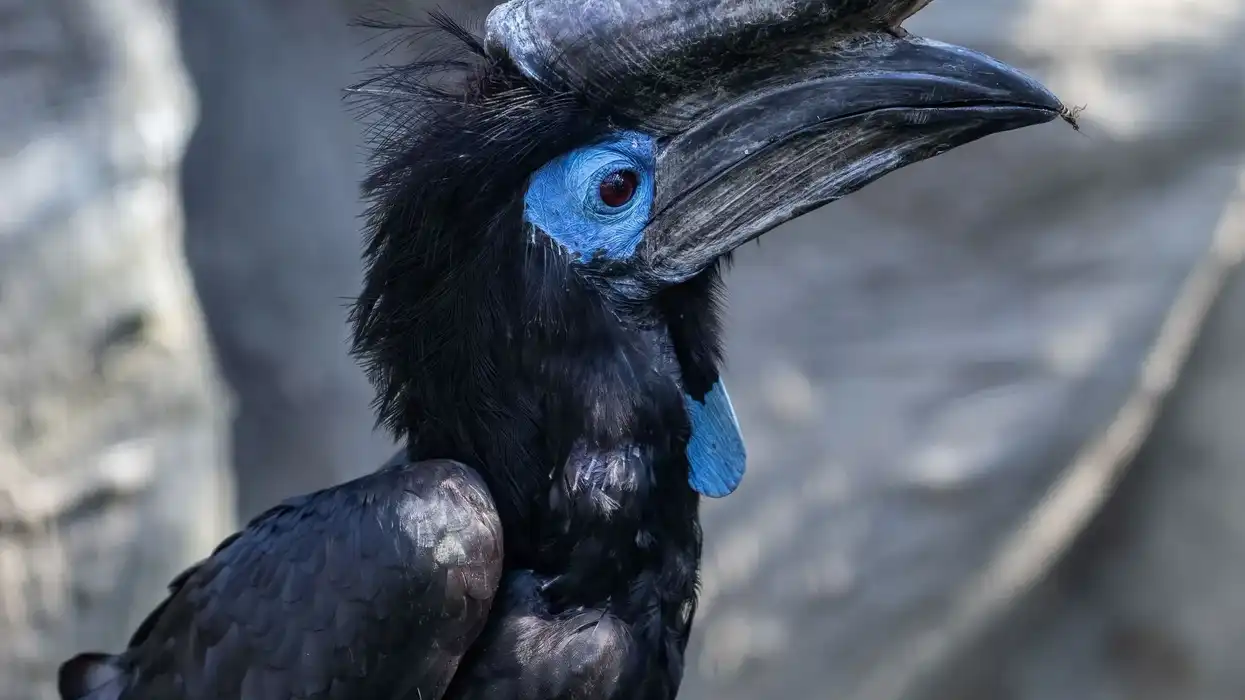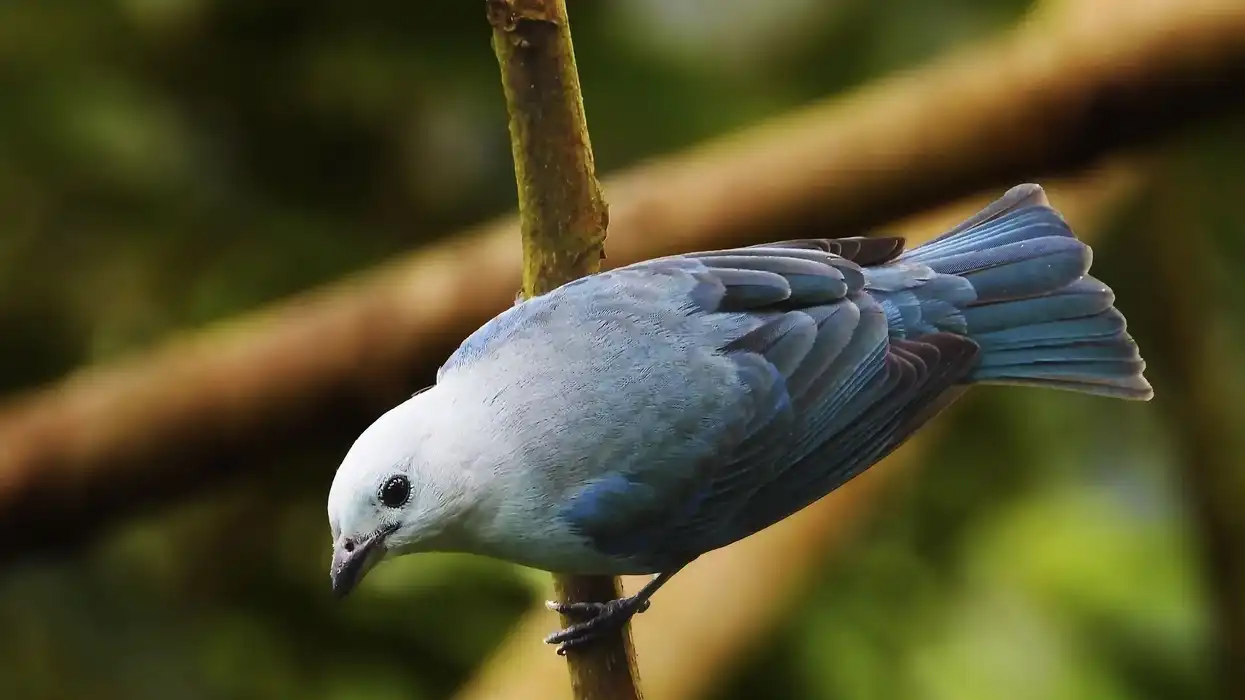Brown-eared bulbul (Hypsipetes amaurotis) are isolated in the monotypic genus Microscelis. Formerly classified in the genus Hypsipetes, their habitat is urban areas of eastern Asia, especially in Japan, the Philippines, Korea, and China.
They are also known as the Asian brown-eared bulbul in Japan. Also found in the Philippines, they are known by the names of chestnut-eared bulbul and Eurasian brown-eared bulbul in Japan and Korea.
The food of Hypsipetes Amaurotis includes fruits. Generally, they don't reach up to high branches of the trees for food. Their food includes berries, holly, and blossoms. These species also have citrus fruits such as mikan oranges.
They are seen to pluck fallen Japanese spindles from the ground. These species of birds also live on seeds. They eat the seeds of the same fruits they eat. But it is seen that in this way they help more in seed dispersal.
For more relatable content, check out these bee-eater facts and evening grosbeak facts for kids.
Brown-Eared Bulbul Interesting Facts
What type of animal is a brown-eared bulbul?
Brown-eared bulbul (Hypsipetes amaurotis) is a bird. It is a species of bulbul. There are twelve subspecies of bulbuls and among them, this one is a very common type.
What class of animal does a brown-eared bulbul belong to?
Brown-eared bulbul (Hypsipetes amaurotis) is a bird and falls under the class of Aves, the family of Pycnonotidae, and the order of Passeriformes.
How many brown-eared bulbuls are there in the world?
Brown-eared bulbul (Hypsipetes amaurotis) are abundant in number around the world. They are absolutely not rare when compared to white-eared bulbuls or yellow-eared bulbuls. They are quite widespread all over Japan, Taiwan, and the Philippines. They are found in large numbers exclusively on offshore islands. They belong to the widely spread order of Passeriformes.
Where does a brown-eared bulbul live?
Brown-eared bulbul (Hypsipetes amaurotis) is a native to eastern Asia. It is also found in the far east of Russia including Sakhalin.
They are common in the northeastern areas of China, the peninsula of Korea, the Philippines, and Japan. Since they are observed in large numbers all over Japan, they are locally known as the Japanese brown-eared bulbul. Their habitats also range in the south of Taiwan, the Babuyan and Batanes island chains in the north of the Philippines.
What is a brown-eared bulbul's habitat?
Brown-eared bulbul (Hypsipetes amaurotis) lives in dense deciduous, mixed, and evergreen forests. They thrive in lowlands and foothills as well as at 1-1.3 mi (1.6-2.1 km) elevated regions when they choose to breed. They are seen flying around in parks and gardens in the suburbs, and the epicenter of the cities in urban areas like China and Japan.
Who does brown-eared bulbul live with?
Hypsipetes amaurotis are migratory birds. They migrate during winter in flocks consisting of 30-40 birds together. This is why a bulbul family is hardly seen in a single place. They are not seen to bond with any other species and don't live with any.
How long does a brown-eared bulbul live?
The lifespan of Hypsipetes amaurotis is nearly 11 years in Japan and the Philippines according to statistical data and records.
How do they reproduce?
Hypsipetes amaurotis breeds from May to August and they are monogamous. The female bulbuls make a sturdy cup-shaped open nest during this period. A male bulbul takes the responsibility of guarding its female mate during breeding time.
The female bulbul is accompanied by its male companion all along. The female becomes prepared to lay eggs and 3-5 purple or pink-colored eggs are laid at one time.
Their incubation period range from 13 - 14 days. The baby bulbul birds have their wings all prepared to fly within 10-11 days after hatching. A bulbul family group stays in their territory for nearly two months before leaving.
What is their conservation status?
IUCN has put Hypsipetes amaurotis under Least Concern in their list. It has been observed from sources that these birds are increasing in population and thus are not endangered.
Brown-Eared Bulbul Fun Facts
What does brown-eared bulbuls look like?
Brown-eared bulbul birds have their upper body dark gray colored. The wings and tail are well aerated and slightly brownish. Both males and females look the same. The main body and thorax are light gray in color with tinges of brown.
White spots are distributed all over the central body. The sides and thighs are grayish-brown in color. The body also shows off different colors like chestnut brown. The sides of the head are reddish-brown in color near the ears.
The bill is absolutely black. The feathers are long and pointed like a crown. The eyes are red which makes them more attractive to see.
The legs and claws are dark-colored. A baby bulbul or a juvenile bulbul is much browner than adults. As they grow, their bodies become pale. At first, their body is olive-brown in color and their face is white.

How cute are they?
Though these species are colorful and look cute by their looks, they are noisy and brash in nature. They chatter all the time and destroy crops nearby them.
How do they communicate?
Hypsipetes amaurotis is quite clubby and noisy. This bird calls other members by a loud and unattractive noise that sounds like “shreep” or “weesp” all over the year.
Sometimes they make a harsher “pee-yuk” kind of sound. The natives of the Philippines reported that these birds make a series of “pee-yuk p-uk p-uk p-uk” sound. They use these chattering things to communicate.
How big is a brown-eared bulbul?
Almost the size of its other subspecies, an adult Hypsipetes amaurotis is nearly 11 in (28 cm) in length and 7.9 in (20 cm) tall in the Philippines. Weighing about 1.1-1.2 oz (30-35 g), this species is almost identical to that of the small Asian black drongo bird.
The size of a full-grown adult is between that of the Eurasian tree sparrow and the oriental turtle dove. However, the tail has a greater length than that of the white-cheeked starling.
How fast can a brown-eared bulbul fly?
Although there is no proper speed mentioned anywhere, these birds are not very fast just like other subspecies. They are primarily migratory birds, so they often migrate over long distances very mainly during the nighttime.
Brown-eared bulbul birds are hunted very often by the peregrine falcon while they migrate, so they fly very close to water bodies so that they cannot attack them.
How much does a brown-eared bulbul weigh?
Hypsipetes amaurotis (Temminck, 1830) weighs very much like other species of bulbul. Their weight roughly measures around 1.1-1.2 oz (30-35 g). They are a bit smaller than violet-backed starlings but bigger than fox sparrows.
What are the male and female names of the species?
No name is given to adult birds of Hypsipetes amaurotis. According to information and sources, the scientific name was given by Temminck, 1830.
What would you call a baby brown-eared bulbul?
Babies can just be referred to as juvenile brown-eared bulbul.
What do they eat?
Brown-eared bulbul birds are carnivores. They feed primarily on insects. They also take fruits and seeds during the winter season. They suck nectar from camelia flowers, thus becoming dusted with yellow pollen grains.
In this way, they help in the pollination of camellia flowers. Other than these, they live on berries, holly, and citrus fruits like oranges grown in Japan and Korea. They also feed on leafy vegetables during winter in Japan.
Are they dangerous?
They are not dangerous to human beings but pose danger to the crops. They destruct orchards and crops in Japan and Korea. Brown-eared bulbuls are aggressive in nature. It is dominant among their species. They also possess aggressive behavior during breeding seasons. They are often seen sitting on fences and screaming by brown-eared bulbul sound they use for communication.
Would they make a good pet?
No, they would not make a good pet.
Did you know...
Its Japanese name is “Hiyodori”.
They belong to the most widespread order of birds, that is Passeriformes.
There are a total of 12 subspecies of bulbuls. Their subspecies can be distinguished from each other with their sizes, tones, and plumage pattern.
Nests are robust and are about 4.9- 14.7 ft (1.5-4.5 m) high from the ground so that damage can't easily be made.
Brown-eared bulbul in flight is very strong and hence enemies cannot easily damage their flight.
Are brown-eared bulbuls endangered?
No, this bird is absolutely not endangered. IUCN has not yet listed them in their books. Their population is rapidly increasing. They are common mostly in Asia.
What is unique about brown-eared bulbuls?
These birds have brown cheeks on both sides of the head near their eyes, giving them the name of brown-eared bulbul. Their long tail makes them different from other species of the bulbuls.
Bulbuls often drink nectar from flowers but do not suck nectar. They push nectar towards the back of their throat using their tongue. Their bill is black in color.
Here at Kidadl, we have carefully created lots of interesting family-friendly animal facts for everyone to discover! For more relatable content, check out these little bee-eater facts and rose-breasted grosbeak facts pages.
You can even occupy yourself at home by coloring in one of our free printable brown-eared bulbul coloring pages.









